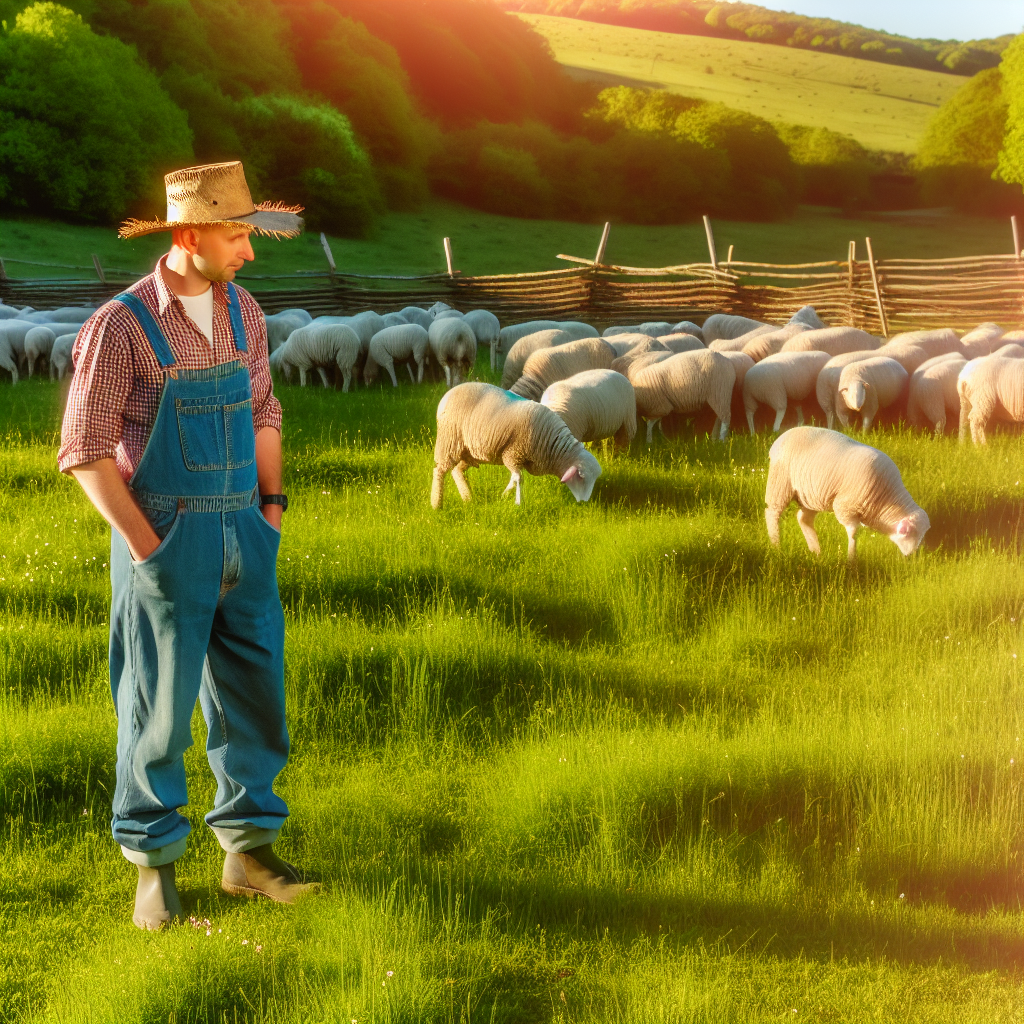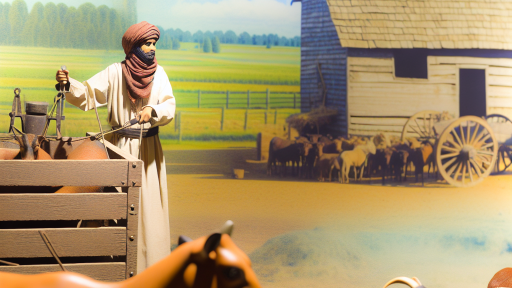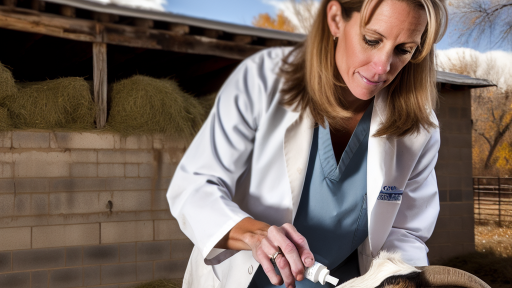Understanding Your Farm’s Goals and Objectives
Defining Your Farming Goals
Clearly define what you want to achieve with your sheep farming.
Your goals may include meat production, wool production, or breeding stock.
For example, ask yourself if you want to focus on high-quality meat or wool.
Establishing clear goals helps guide your decision-making process.
Assessing Farm Resources
Evaluate your available resources before selecting sheep breeds.
Consider the land size, facilities, and budget allocations.
You may need to assess water supply and grazing availability as well.
Your resources will significantly influence the types of sheep you can raise.
Identifying Market Demand
Research the market demand for various sheep products.
Understanding local buyer preferences can shape your sheep selection.
For instance, some markets prefer organic lamb, while others may focus on wool.
Identifying market demand aligns your farming objectives with profitability.
Setting Production Objectives
Define your production objectives clearly and specifically.
Your objectives may focus on flock size, breeding cycles, or health standards.
Having measurable objectives aids in tracking progress over time.
Transform Your Agribusiness
Unlock your farm's potential with expert advice tailored to your needs. Get actionable steps that drive real results.
Get StartedUltimately, these objectives should align with your overall farming goals.
Creating a Sustainable Farming Plan
Consider how your sheep operation fits into broader sustainability goals.
Integrating eco-friendly practices can improve long-term viability.
Evaluate options for rotational grazing and pasture management.
Focus on reducing environmental impacts while enhancing productivity.
Assessing Climate and Environmental Conditions
Understanding Local Weather Patterns
Study the typical weather patterns in your area.
Analyze seasonal changes to determine sheep needs.
For instance, different breeds adapt to cold or warm climates.
Thus, choose breeds suited for your local conditions.
Soyl Quality and Forage Availability
Examine the quality of your soil before selecting sheep.
Healthy soil supports better forage production.
Consider conducting a soil test to assess nutrient levels.
Evaluate forage quality and quantity on your farm.
Settle on breeds that thrive on available forage types.
Water Sources
Ensure consistent access to clean water for your sheep.
Water supply affects sheep health and productivity.
Check if natural water sources are adequate during dry spells.
If not, plan to install water troughs for additional supply.
Pest and Disease Management
Identify common pests and diseases in your region.
Some sheep breeds are more resistant to specific diseases.
Choose breeds that require less intensive management.
This will help reduce long-term veterinary costs.
Resilience to Environmental Stressors
Consider how different breeds respond to environmental stressors.
Look for traits such as heat tolerance or cold hardiness.
Showcase Your Farming Business
Publish your professional farming services profile on our blog for a one-time fee of $200 and reach a dedicated audience of farmers and agribusiness owners.
Publish Your ProfileMoreover, resilience affects overall flock productivity.
Therefore, select breeds that align with your climate challenges.
Evaluating Sheep Breeds: Characteristics and Adaptability
Understanding Breeds
Choosing the right sheep breed requires careful evaluation.
Each breed has unique characteristics that influence productivity.
Some sheep excel in wool production, while others are better for meat.
Additionally, consider the breed’s adaptability to local climates.
Popular Sheep Breeds
Various breeds are popular for farming due to their specific traits.
- Merino sheep are known for their high-quality wool.
- Suffolk sheep are favored for meat production.
- Dorper sheep adapt well to harsh environments.
- Hampshire sheep offer a good balance of meat and wool.
Assessing Adaptability
Adaptability is crucial when selecting sheep for your farm.
Evaluating how well a breed performs in your area is essential.
Consider aspects such as climate, pasture quality, and livestock management.
Consult local farmers to gain insights on breed performance.
Productivity and Lifespan
Productivity metrics vary across sheep breeds.
For instance, some may yield more wool, while others produce more offspring.
A breed’s lifespan also influences long-term profitability.
Choosing a breed with a longer lifespan can reduce replacement costs.
Health and Welfare Considerations
Health issues can impact sheep productivity significantly.
Some breeds are more prone to diseases than others.
Research common health challenges associated with desired breeds.
Invest in breeds that are known for robustness and disease resistance.
Making Informed Choices
Ultimately, successful sheep farming relies on making informed decisions.
Evaluate all the factors that influence sheep breed performance.
By understanding breed characteristics, you ensure better outcomes.
Engage with experts and local resources to refine your choices.
Learn More: Best Practices for Breeding Fish in Aquaculture Systems
Considering Feed Availability and Nutritional Needs
Understanding Nutritional Requirements
Every sheep breed has specific nutritional needs.
Understanding these needs helps in selecting the right animals.
Sheep require a balanced diet for optimal growth.
To meet these requirements, consider protein, fiber, and minerals.
Quality feed is essential for healthy sheep development.
Assessing Available Feed Resources
Evaluate the feed resources available on your farm.
Check if you have access to quality pastures or hay.
Additionally, consider the availability of supplemental feeds.
Local climate affects the growth of pasture plants.
Choosing sheep that thrive in your environment is crucial.
Determining Feed Costs
Calculate the cost of providing adequate nutrition.
Reliable nutrition influences your farming budget significantly.
Explore options for cost-effective feeding solutions.
Consider bulk purchasing to reduce overall feed expenses.
Budgeting effectively ensures long-term farm sustainability.
Incorporating Seasonal Variations
Recognize that sheep’s nutritional needs vary by season.
Showcase Your Farming Business
Publish your professional farming services profile on our blog for a one-time fee of $200 and reach a dedicated audience of farmers and agribusiness owners.
Publish Your ProfilePlan for dietary changes during winter and summer months.
During colder months, sheep need more energy content in feed.
In warmer months, forage quality may decline rapidly.
Adapting feeding strategies to seasonal changes is key.
Consulting with Experts
Seek advice from veterinarians or animal nutritionists.
Experts provide valuable insights into sheep nutrition.
Utilize local agricultural resources for tailored guidance.
Collaboration with specialists enhances livestock management.
Continuous learning ensures your farm’s nutritional strategies evolve.
Gain More Insights: Common Challenges in Exotic Livestock Management
Analyzing Market Demand and Economic Viability
Understanding Market Trends
Market trends play a crucial role in selecting the right sheep breed.
Research current consumer preferences in the sheep industry.
Focus on the demand for meat, wool, or dairy products.
Connect with local buyers to gauge their needs.
Attend agricultural fairs and livestock expos to stay informed.
Identifying Economic Viability
Calculate the potential return on investment for your sheep farm.
Consider the costs of feed, housing, and veterinary care.
Analyze market prices for sheep products in your area.
Evaluate the competition and identify your unique selling proposition.
Develop a budget that includes all operational costs.
Resources for Further Analysis
Utilize agricultural extension services for expert advice.
Access state and federal agricultural reports for market data.
Join farming cooperatives for shared resources and knowledge.
Engage with local agricultural universities for research findings.
Leverage online forums and social media groups to connect with other farmers.
Making Informed Decisions
Compile all gathered data to formulate an informed decision.
Consider both short-term and long-term benefits for your farm.
Reassess your findings regularly to adapt to market changes.
Stay flexible to shifting trends and consumer needs.
Ultimately, a well-informed choice leads to sustainable farming success.
Find Out More: Energy-Efficient Solutions for Sustainable Aquaculture

Exploring Health and Disease Resistance in Sheep Breeds
Importance of Selecting Healthy Breeds
Choosing healthy sheep breeds is crucial for farm productivity.
Healthy sheep tend to grow better and produce quality wool.
Moreover, they are less prone to diseases, saving money on treatment.
Common Health Issues in Sheep
Sheep can suffer from various health issues affecting their well-being.
Some common problems include respiratory diseases, parasites, and foot rot.
Identifying these issues early leads to better outcomes for the flock.
Factors Influencing Disease Resistance
Several factors influence a sheep breed’s resistance to diseases.
Genetic factors play a significant role in determining resilience.
Additionally, management practices can enhance health and immunity.
Showcase Your Farming Business
Publish your professional farming services profile on our blog for a one-time fee of $200 and reach a dedicated audience of farmers and agribusiness owners.
Publish Your ProfileTypes of Sheep Breeds with High Disease Resistance
Certain sheep breeds are recognized for their disease resistance.
- Dorper sheep are known for their robustness and low maintenance.
- Southdown sheep exhibit strong immunity against common ailments.
- Romney sheep show resilience to foot rot and other health issues.
Evaluating Sheep Health Before Purchase
Evaluating the health of sheep before purchasing ensures a healthy flock.
Inspect each sheep for signs of illness, such as coughing or limping.
Ask sellers for health history, including vaccinations and treatments.
Consulting Veterinary Professionals
Working with a veterinarian helps in selecting healthy sheep breeds.
Veterinarians can provide insights into breed-specific health concerns.
Regular check-ups are beneficial for maintaining herd health.
Delve into the Subject: Technology Innovations in Livestock Transportation
Determining Space and Shelter Requirements
Estimating Available Space
Start by evaluating the total area of your farm.
Consider the grazing land needed for each sheep.
Sheep typically require at least one acre per five to seven animals.
After that, account for additional space for shelters.
Make sure to include space for fenced areas and feed storage.
Understanding Shelter Needs
Sheep need adequate shelter to protect them from harsh weather.
The shelter should be well-ventilated and dry.
A sturdy barn or shed can provide suitable protection.
Ensure the shelter has enough room for all the sheep to lie down comfortably.
Each sheep needs at least 15 to 20 square feet of indoor space.
Considering Grazing Systems
Decide on a grazing system that works best for your farm.
Rotational grazing helps maintain pasture health.
This system requires more space and planning.
Strip grazing can also be an effective method.
It allows you to maximize your available pasture.
Planning for Future Growth
Think ahead about potential herd expansion.
Plan your space and shelter to accommodate growth.
Investing in extra facilities now can save costs later.
Monitor your sheep numbers and adjust as necessary.
A well-prepared space ensures a thriving farm operation.
Reviewing Breeding Practices and Genetic Factors
Importance of Selecting Quality Breeding Stock
Selecting quality breeding stock is crucial for improving herd performance.
Healthy genetics lead to stronger offspring.
Investing in quality breeds can increase profitability.
Additionally, strong genetics reduce disease susceptibility.
Understanding Genetic Diversity
Genetic diversity plays a vital role in livestock health.
A diverse gene pool promotes resilience against diseases.
Farmers should prioritize breeds that enhance genetic variation.
Subsequently, maintaining diversity helps prevent inbreeding issues.
Evaluating Breeding Practices
Effective breeding practices ensure desirable traits are passed on.
Farmers must evaluate their breeding objectives regularly.
Setting clear goals can streamline breeding decisions.
Moreover, consistent evaluation helps identify successful traits.
Showcase Your Farming Business
Publish your professional farming services profile on our blog for a one-time fee of $200 and reach a dedicated audience of farmers and agribusiness owners.
Publish Your ProfileIncorporating Artificial Insemination
Artificial insemination offers access to superior genetics.
This method increases the diversity of breeding options.
It also reduces the need for maintaining multiple rams.
Consequently, farmers can focus on high-quality genetics.
Monitoring Genetic Progress
Farmers should continually monitor genetic progress within their flock.
Recording performance data helps assess breeding success.
By analyzing this data, producers can make informed decisions.
Additionally, evaluating offspring performance reveals strengths and weaknesses.
Consulting with Experts
Engaging with geneticists and veterinarians can enhance breeding efforts.
Experts provide valuable insights into selecting appropriate breeds.
They can also recommend effective breeding strategies.
Thus, consulting experts supports more informed choices.




